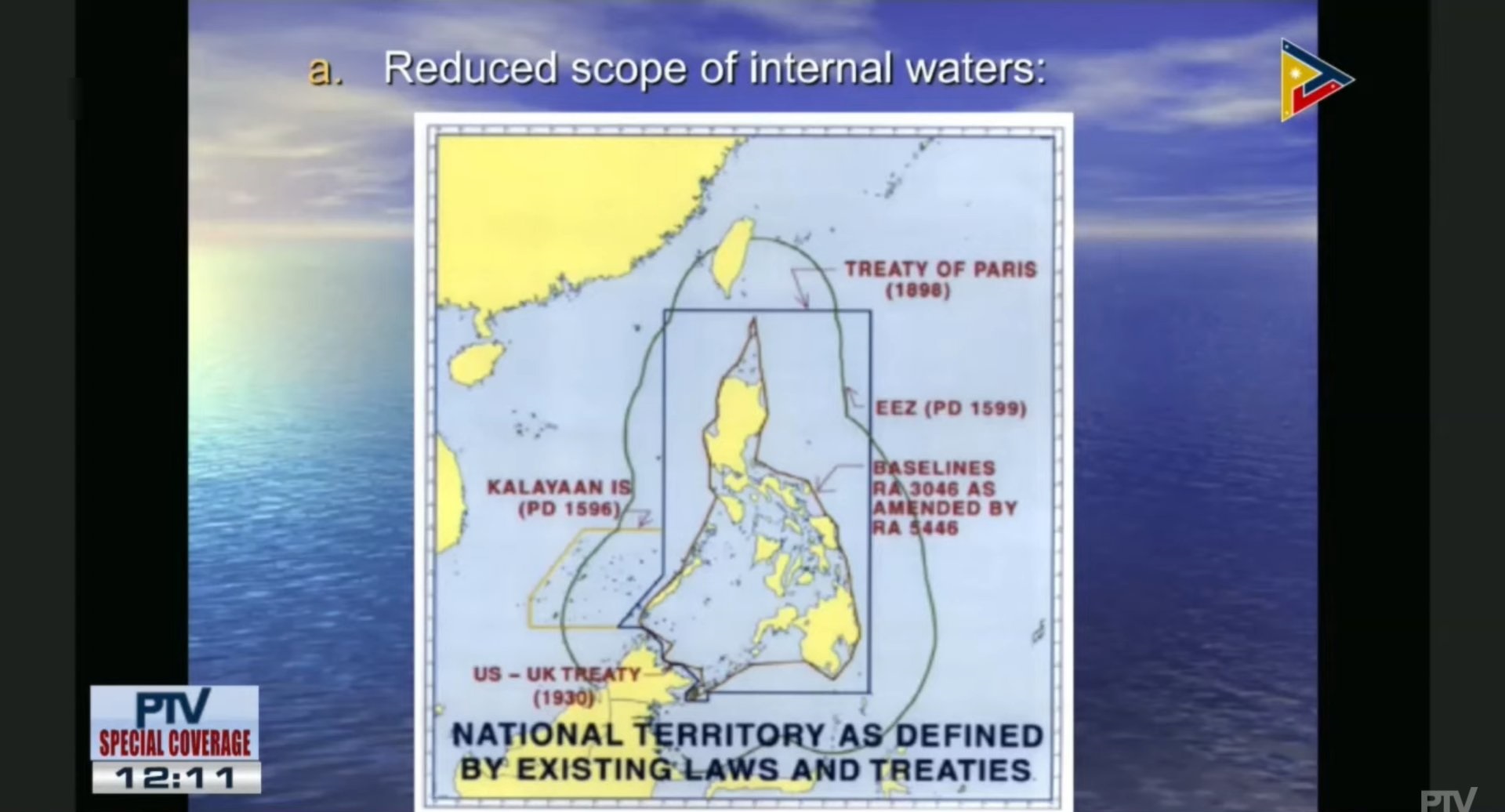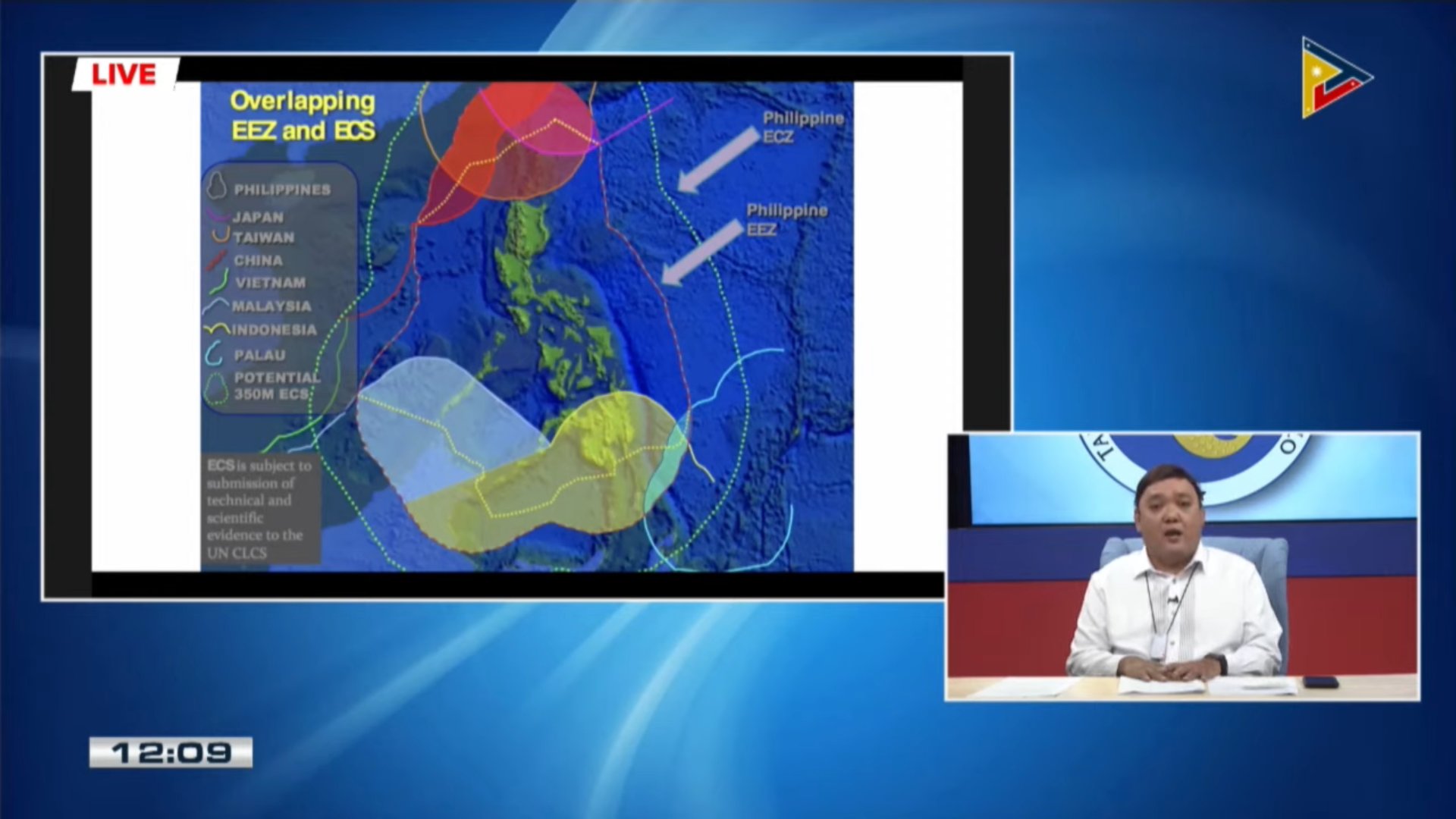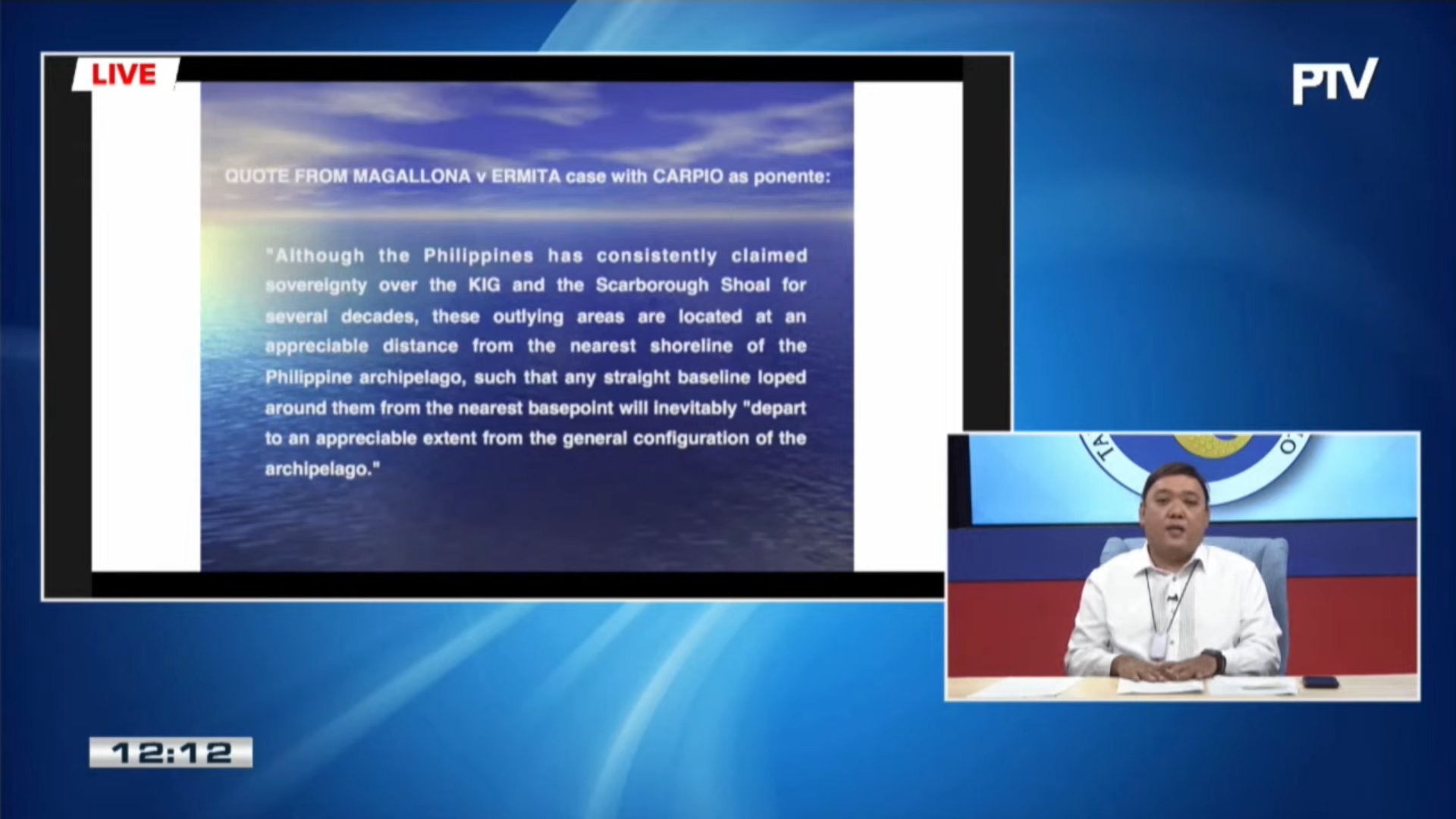By NG Seruela and Alec Go
Tension is still fraught in the Philippines as it tackles one of the most controversial issues to date, the territorial dispute in the West Philippine Sea.
The National Task Force for the West Philippine Sea (NTF-WPS) reported that 220 Chinese fishing vessels believed to be manned by Chinese maritime militia personnel were spotted in the Julian Felipe Reef on March 7.
Since then, the number of Chinese ships in the area has barely decreased. The recent NTF-WPS report stated that based on a maritime patrol conducted on May 9 by the Armed Forces of the Philippines (AFP), 287 Chinese vessels were sighted in the West Philippine Sea.
President Rodrigo Roa Duterte, in his latest public address, said he will not order his ships to retreat despite the Philippines’ debt of gratitude to China for their donation of COVID-19 vaccines.
“We have a stand here and I want to state it here and now again, that ‘yong mga barko natin nandiyan ngayon sa Pag-asa [island] at saan pa, we will not move an inch backward,” he said.
The President also said on (April 28) that he will not order Philippine ships to retreat from the West Philippine Sea, after Chinese Foreign Ministry Spokesperson Wang Wenbin asked the Philippines to halt its actions that he said can worsen the tension in the WPS.
Read more: PRRD to PH ships in WPS: Do not retreat
1935 Constitution vs. 1987 Constitution
Presidential Spokesperson Harry Roque on May 13 explained that the scope of Philippine territory is written in the country’s Constitution.
The 1935 Constitution states that by virtue of the Treaty of Washington and Treaty of Paris, Philippine territory includes the Scarborough Shoal and the Turtle Islands.
However, in the 1987 Constitution, it states that the Philippine archipelago, “with all the islands and waters embraced therein, and all other territories over which the Philippines has sovereignty or jurisdiction, consisting of terrestrial, fluvial, and aerial domains, including territorial sea, seabed, subsoil, insular shelves, and other submarine areas around, between, and connecting the islands of the archipelago, regardless of their breadth and dimensions, form part of the internal waters of the Philippines.”
Through the 1987 Constitution, the national territory has expanded.
“Kasama pa rin po diyan ang Treaty of Paris, kasama po diyan ‘yong disputed territories ng Sabah and Spratlys, at kasama diyan ‘yong iba’t-ibang maritime zones sang-ayon po sa United Nations Convention on the Law of the Sea (UNCLOS).”

Archipelagic baselines
According to Roque, the late former Senate President Arturo Tolentino, in the 1950s, proposed a regime of archipelagic waters along with Indonesia. The Philippines and Indonesia wanted the world to acknowledge their archipelagic waters.
In 1961, through Republic Act (RA) No. 5446 that amended RA 3046 or An Act to Define the Baselines of the Territorial Sea of the Philippines, the country drew its archipelagic baselines that define the Philippine territory.
“Iyong straight baselines po sa archipelago natin, iyan po ‘yong ating archipelagic baselines, ang tubig sa loob no’n internal waters, wala pong pwedeng maglayag ng walang consent natin. Iyong tinatawag nating territorial seas ay ‘yong tubig po sa loob ng kwadrado ng Treaty of Paris,” Roque said.
However, Tolentino’s proposal was denied. The archipelagic waters written in the UNCLOS are subject to innocent passage and subject to overflight. The late politician did not file a complaint because “it is not mandatory.”
Presidential Decree No. 1596, s. 1978
PD No. 1596, Declaring Certain Areas Part of the Philippine Territory and Providing for their Government and Administration, was signed by the late former President Ferdinand Marcos on June 11, 1978.
Under the decree, the Kalayaan Island Group (KIG) is constituted as a distinct and separate municipality of the Province of Palawan.
It states that the KIG is “vital to the security and economic survival of the Philippines” and that “cluster of islands and islets in the South China Sea” does not legally belong to any state or nation, but “by reason of history, indispensable need, and effective occupation and control established in accordance with international law,” they are subject to the sovereignty of the Philippines.
The decree also states that if other states have laid claims to some of the areas, their claims have “lapsed by abandonment” and cannot “prevail over that of the Philippines on legal, historical, and equitable grounds.”
2009 Baselines Law
Roque said a huge problem arose in 2009 following the issuance of an administrative bill which made it mandatory to comply with UNCLOS. Former Chief Justice Antonio Carpio admitted to Roque that the law was not mandatory, but “permissive.”
Roque said the deadline given to them was for the submission of the “extended continental shelf.”
“Tapos ang sabi po siyempre ng Kongreso noon, it is to our interest daw, kasi kapag tayo naging complainant with UNCLOS, mas lalakas ang posisyon natin laban sa mga kalaban natin sa pinag-aagawang teritoryo. So binago po nila ang national territory natin.”
The spokesperson said the country’s internal waters were reduced in size because of the 2009 new Baselines Law, which referred to them as “archipelagic waters,” making them subject to overflight and innocent passage.
“Pangalawa po, nawala ‘yong territorial sea natin na malaki po ‘yan, 263,300 square miles, according to the Treaty of Paris. At ‘yong ating territorial sea naging 12 nautical miles na lang po – 34,300 square miles… Sa UNCLOS, lumiit po [sa] 34,300,” he said.
“Pero ang sabi po ng Korte Suprema, anyway ang kapalit niyan ay napakalaking exclusive economic zone,” he added, but noted that there are “overlaps” in the 200 [nautical miles] exclusive economic zones of claimant nations which are resolved through “delimitation” and agreements.

He clarified that the EEZ is only an “economic right,” while internal waters and territorial seas concern sovereignty and jurisdiction.
He also said that the Kalayaan Island Group was not affected, but added that “the Philippines could not declare archipelagic baselines surrounding the Spratly Islands” which is the function of PD 1596.
“In effect, ang sinasabi nila hindi pwedeng magkaroon ng offshore archipelago… Ang sabi pa nila is hindi pwedeng sitwasyon na offshore archipelago na siyang treatment po ng ating PD 1596,” he said.

“Malinaw…na habang dineclare ng UNCLOS tribunal na walang legal na basehan ang nine-dash lines, sinasabi rin ng tribunal na wala ring legal na basehan ang PD 1596,” Roque said, adding that what is alarming was lawmakers’ neglect of the Treaty of Paris.
“May batas na binalewala na ‘yong Treaty of Paris of boundaries. Saan ngayon ididikit ‘yong Spratlys sang-ayon sa 15[96]? Pero mas nakakabahala po ngayon, para ba gang na-declare as illegal to UNCLOS and null and void din ang PD 1596,” he added.
Read more: Former Amb. Manalo: Arbitration on WPS “not set up correctly”
Career diplomat and Philippine representative to the United Nations Committee on the Elimination of Discrimination against Women (CEDAW) Rosario Manalo said in a July 12, 2019 interview that arbitrations under UNCLOS are “compulsory,” meaning that two parties must follow the process resulting in binding decisions. The two parties must respect the court’s decision.
But when UNCLOS was ratified, she said, the Philippines “opted out” of that provision. This means the country will not use the compulsory arbitration clause. China opted out as well.
“But in the Philippines, when we ratified the UNCLOS, we opted out of that provision, which means hindi natin gagamitin ang compulsory arbitration. Without even us talking to the Chinese or whatever, equally the same, the Chinese opted out of that provision. So both PH and China cannot invoke compulsory arbitration under the UNCLOS because we opted out,” Manalo explained.
She said one remedy to this was to bring the case to the UN Charter for a voluntary arbitration, but the Philippines chose to set up an arbitration panel instead.
Officials have consistently reiterated that the arbitral ruling favoring the Philippines over China is not recognized by the latter and that there are no enforcement mechanisms.
“Iyon ang critical point doon. So just to show you na hindi na ito madala ng papel… You wave it in front of the face of the Chinese, sabihin niya, ‘You throw it to the basket, to the trash can. We do not honor it. It’s yours,” Duterte said on May 13.
“Ang problema was there enough jurisdiction?… Pero basta tayo, we just went on to prove our case and we won. Nanalo tayo diyan and I affirm that I believe it in its entirety. So ang problema is the implementation,” he added.
The Chief Executive said he is not ready to withdraw the country’s ships in the area. He, however, called on China to respect the Philippines’ position.
“It’s not wrong to admit na inferior ka in terms of might and power… Ito lang talaga ang kakayahan ko, pero huwag mo naman akong kayahin. Ngayon, hindi talaga ako aatras. Patayin mo man ako kung patayin mo ako, dito ako. Dito magtatapos ang ating pagkakaibigan,” he said. -jlo
